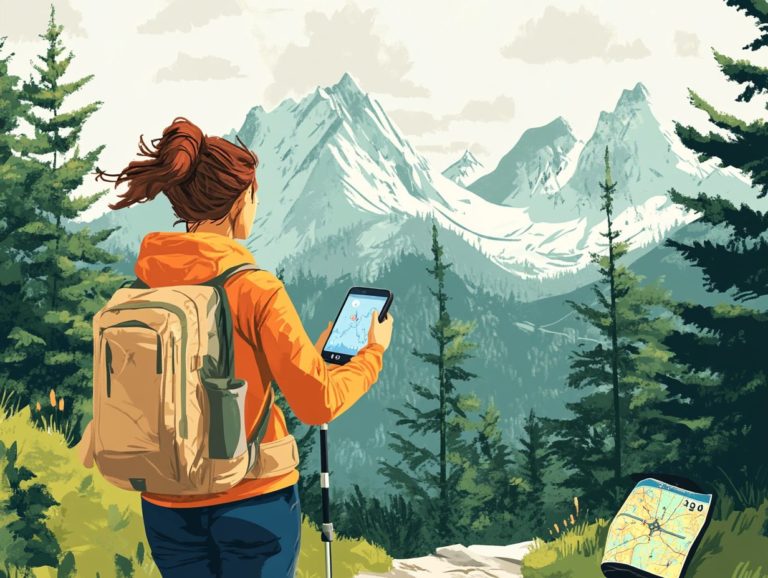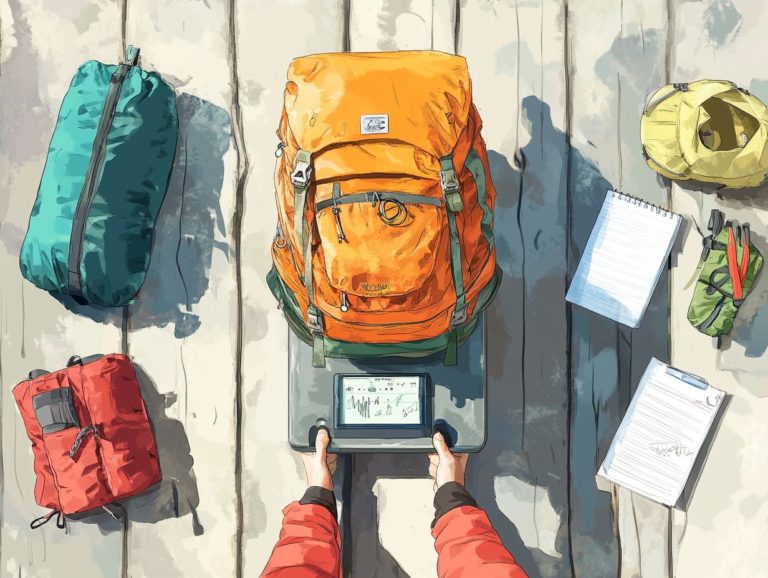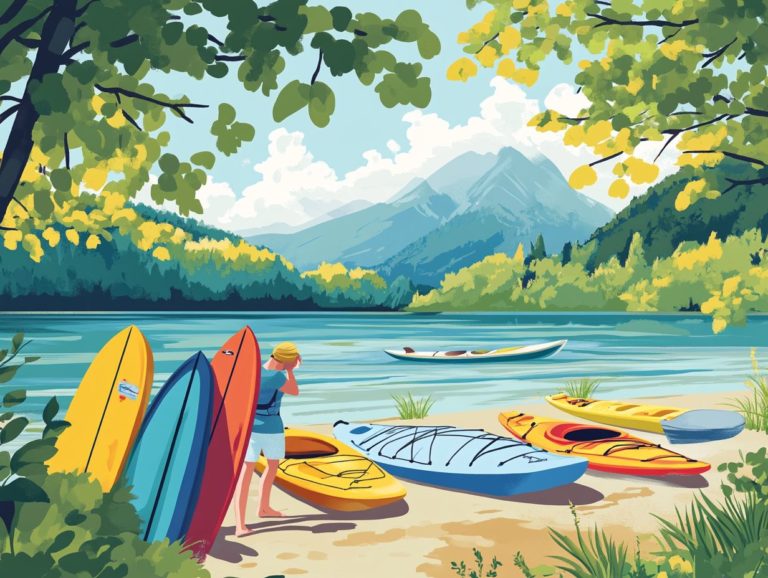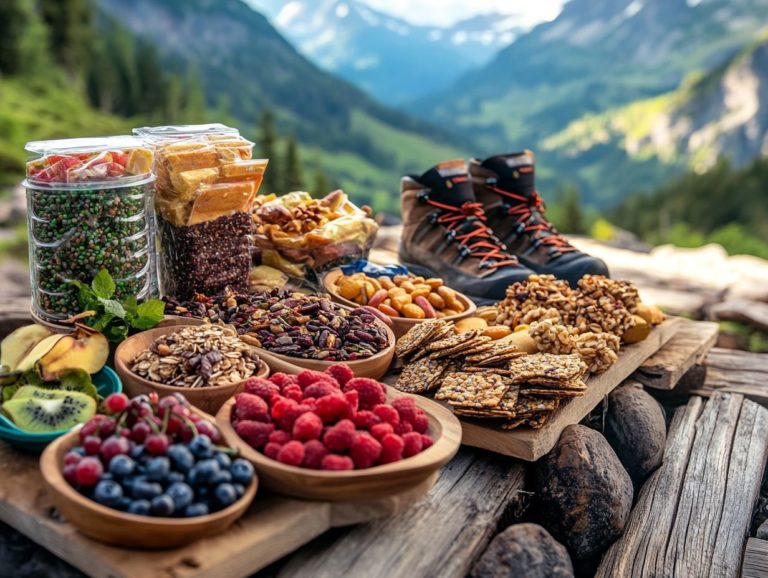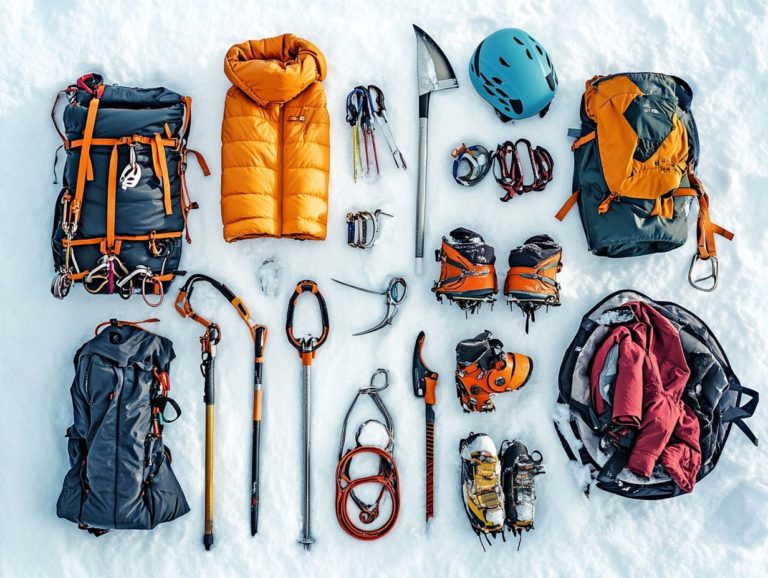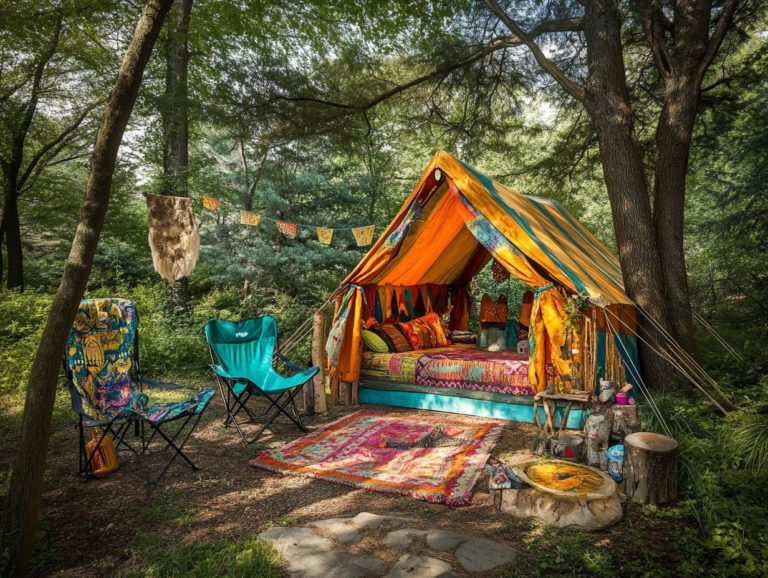What Should You Include in Your Survival Kit?
In times of emergency, your level of preparedness can truly set you apart. A thoughtfully stocked survival kit becomes indispensable when navigating through unexpected situations be it a natural disaster, a sudden power outage, or any unforeseen crisis.
This article outlines the essential items your kit must include, ranging from food and water to first aid supplies and communication tools. It also delves into how to tailor your survival kit to suit your unique circumstances, ensuring that you are fully equipped for whatever challenges lie ahead.
Contents
- Key Takeaways:
- Why They are Important for Emergency Situations
- Basic Necessities for Survival Kits
- Additional Items to Consider
- Customizing Your Survival Kit
- Frequently Asked Questions
- What should you include in your survival kit?
- Do I need to include different items for different types of emergencies?
- Should I pack enough supplies for a specific amount of time?
- What type of food should I include in my survival kit?
- Is it important to have a first aid kit in my survival kit?
- Where should I store my survival kit?
Key Takeaways:
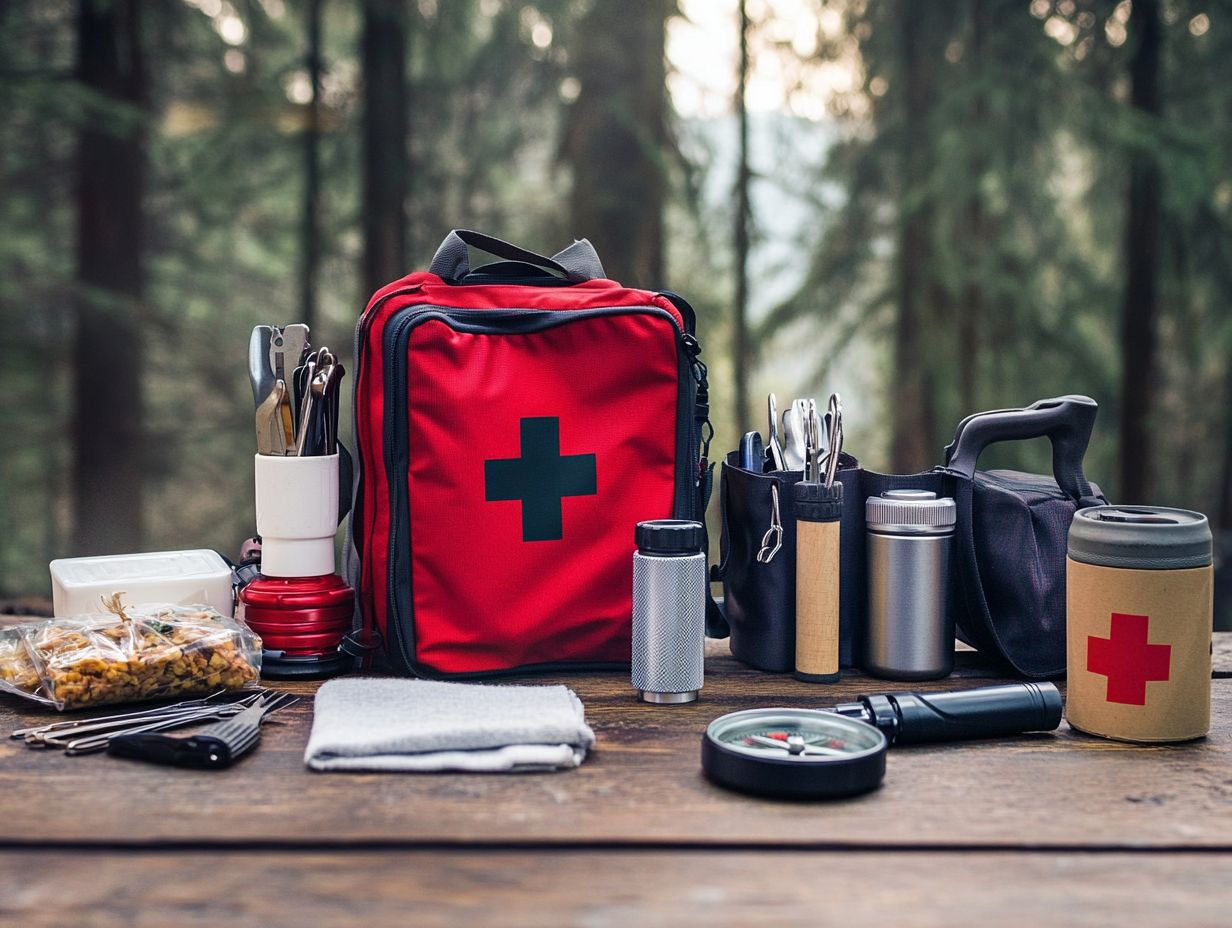
- Always include food, water, shelter, warmth, first aid supplies, and communication tools in your survival kit to ensure basic necessities are covered.
- Remember to also consider personal hygiene, tools, emergency cash, and important documents for a well-rounded kit for any situation.
- Customizing your kit based on your specific needs, such as location and potential emergencies, is crucial for optimal preparedness and survival.
Why They are Important for Emergency Situations
Understanding the importance of survival kits for emergency situations is essential, as these kits serve as crucial resources in reducing risks from natural disasters like earthquakes, hurricanes, and other unforeseen events. Your preparedness can truly make the difference between life and death, equipping you and your loved ones with the necessary supplies to navigate emergencies effectively.
A carefully crafted emergency plan, paired with a comprehensive survival kit, not only provides peace of mind but also enhances safety during critical times. Having a survival kit means you ll have access to clean water, non-perishable food, and first aid supplies resources that can sustain you while you await rescue.
FEMA and the American Red Cross suggest stocking essentials like flashlights, batteries, and multipurpose tools, which are invaluable for both navigation and minor repairs. During a medical emergency, having specific items like a basic first aid kit or your personal medications can be lifesaving, especially when paired with CPR training and knowledge of trauma care.
By taking proactive measures to prepare, you not only equip yourself for the unexpected but also cultivate a sense of resilience and self-sufficiency that can be invaluable in times of crisis. Act now to secure your safety!
Basic Necessities for Survival Kits
A meticulously curated survival kit should include all the essentials that can sustain you through a crisis. Think of vital supplies like:
- Nutritious food
- Effective water purification methods (methods to make water safe to drink)
- First aid supplies
- Reliable evacuation tools, including options like Katadyn and MSR water filters.
Each item is essential in safeguarding your well-being during emergencies. Your basic supplies should address immediate household needs and ensure you have access to sustenance and medical care, as well as emergency contact information for critical situations.
Don’t forget to incorporate communication tools, like a portable radio, to keep you informed and connected when it matters most.
Food and Water
In any survival kit you assemble for emergency preparedness, prioritizing food supplies and ways to clean water is crucial, as they are essential for sustaining life during a disaster. Stocking up on non-perishable foods alongside effective water purification methods ensures you have access to vital nutrients and clean drinking water both key for health and survival during prolonged emergencies.
When choosing food supplies, consider options like freeze-dried meals, canned vegetables, and protein bars, ensuring you include sufficient water treatment options. These are highly recommended for their longevity and nutrient density. Adding items such as trail mix or dehydrated fruits can bring not only energy but also a welcome variety to your provisions.
For cleaning water, you have several effective methods at your disposal, including Polar Pure and filtration systems. Filtration systems, including portable filters or gravity-fed units, skillfully remove contaminants, while purification tablets provide a convenient alternative for quickly treating small amounts of water. Together, these choices will bolster your preparedness in any challenging situation.
Shelter and Warmth
Shelter and warmth are essential elements in any survival kit, especially during emergencies when external conditions can drastically affect your health and safety. Equip yourself with appropriate outdoor clothing, along with emergency blankets or tents, to secure vital protection against the elements. This ensures that you remain safe and warm even in the most adverse weather.
Master layering techniques to trap body heat with items like thermal base layers and insulated outerwear. Understanding the demands posed by various climates will help you choose the right materials. For instance, moisture-wicking fabrics are fabrics that keep you dry by pulling moisture away from your skin, while fleece works wonders in dry, chilly conditions.
Include handy items like hand warmers, dependable sleeping bags, and portable heating sources in your survival kit to further enhance your warmth. By understanding the relationship between shelter solutions and suitable attire, you can better prepare for unexpected challenges, ultimately boosting your chances of survival.
First Aid Supplies
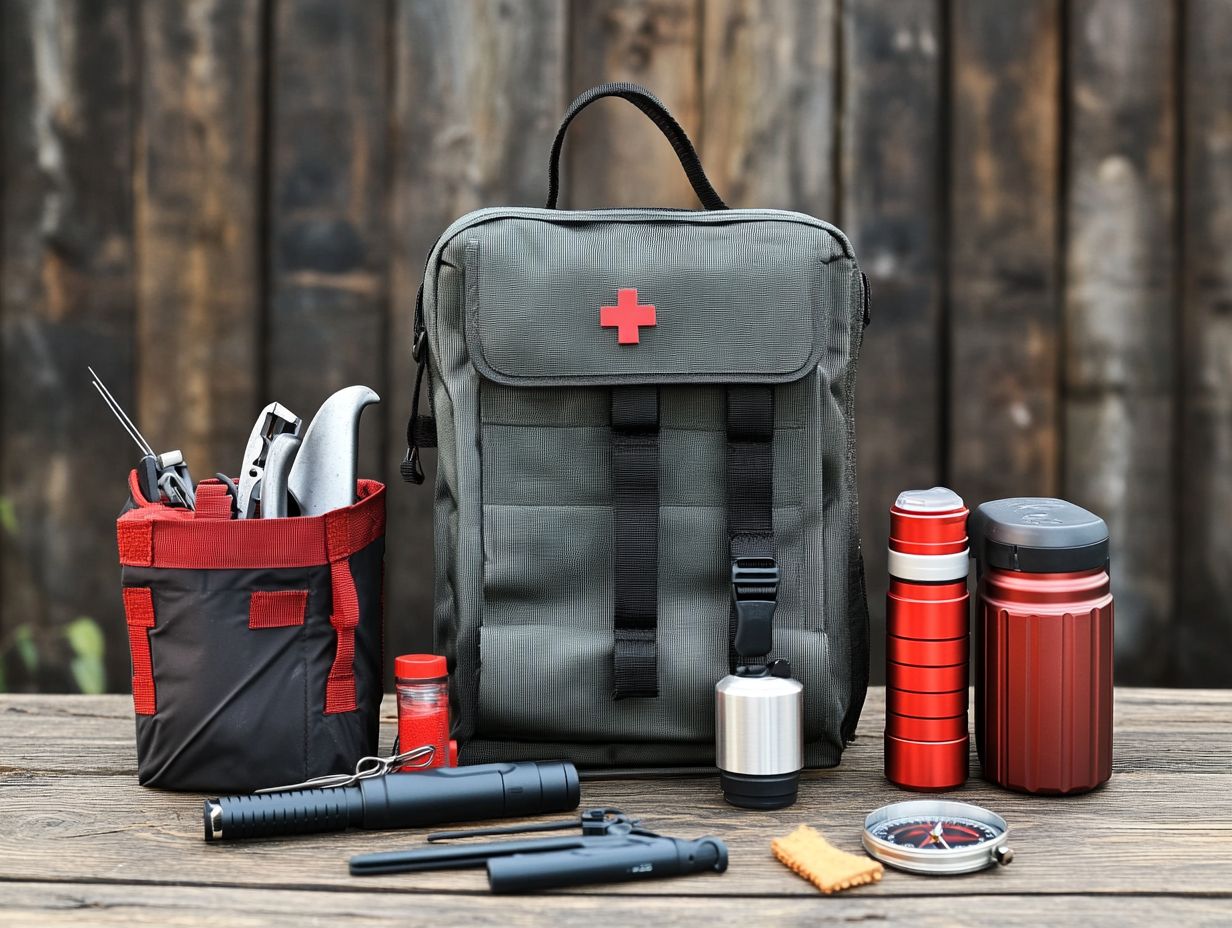
First aid supplies are an absolute must-have in any survival kit. They offer crucial tools for first aid and addressing medical emergencies that could arise during a disaster.
These kits are lifesavers you can t afford to miss in situations like minor cuts, burns, or even more serious injuries from falls or accidents. To prepare for such scenarios, include a variety of adhesive bandages and sterile gauze pads to help control bleeding and protect wounds from infection.
Items like scissors and tweezers are essential for removing splinters or cutting tape. An emergency blanket can prove invaluable for treating shock or hypothermia, making your first aid supplies comprehensive. Don’t forget gloves and masks act now to ensure you have them ready!
A well-stocked first aid kit enables you to respond swiftly and effectively to urgent medical situations, ensuring you’re ready for whatever life throws your way.
Essential First Aid Supplies for Your Survival Kit
Start assembling your survival kit now for peace of mind!
Communication Tools
Communication tools, like a portable radio, are essential components of your survival kit. They keep you informed and connected during emergencies, ensuring you have access to important news and emergency contact information.
In an era where information is paramount to safety, having reliable communication methods can truly be life-saving during natural disasters or crises. These devices act as your lifeline, enabling you to receive timely weather alerts, updates from local authorities, and instructions on evacuation supplies during emergencies.
Make sure your emergency contact list is easy to find it could save lives! This list should include family members, friends, and local emergency services and be accessible in both digital and paper formats.
Including additional communication tools, such as satellite phones or two-way radios, enhances your ability to transmit information when traditional networks fail. By incorporating these tools and strategies, you can significantly boost your chances of staying connected and safe in the face of adversity.
Additional Items to Consider
When you prepare a survival kit, don’t overlook the importance of additional items like emergency cash, essential documents, and personal hygiene supplies. These elements enhance your overall preparedness and safety.
Beyond the basic supplies, including sanitation items and necessary tools can make a remarkable difference in maintaining your well-being during emergencies.
Personal Hygiene and Sanitation
Including personal hygiene and sanitation items in your survival kit is essential for maintaining your health and comfort during emergencies, especially when access to facilities may be compromised, particularly in Pakistan, India, and the Middle East.
Basic supplies like wet wipes, hand sanitizers, and feminine hygiene products are crucial in preventing disease and keeping you feeling good.
In a survival situation, a well-stocked selection of hygiene items can truly make a difference in promoting both your physical and mental well-being. Items such as toothbrushes, toothpaste, biodegradable soap (which breaks down naturally and is better for the environment), and portable toilet options are just as vital; they help reduce the risk of illness and lift your spirits.
It’s wise to prioritize lightweight, compact products that fit effortlessly into your kit, such as a Swiss Army Knife or a reliable flashlight. Remember to regularly check expiration dates and ensure items are sealed to avoid contamination. Being prepared means you’ll be ready for anything that comes your way!
Tools and Equipment
Essential tools and equipment, like a Swiss Army Knife and a flashlight, are critical components of any survival kit, providing you with versatile solutions for a variety of situations. These multifunctional tools can assist you with everything from food preparation to illuminating your surroundings during power outages, ensuring you re well-equipped for any emergency.
A reliable multi-tool is invaluable. It serves multiple functions cutting, screwing, and even opening bottles making it a handy companion for a range of tasks.
A sturdy flashlight, particularly one with adjustable brightness and a long battery life, enhances your safety by allowing you visibility in the darkest environments. Lightweight and compact fire starters are equally essential, enabling you to quickly ignite a fire for warmth or cooking.
Don’t overlook the importance of durable rope or paracord, which can be used for shelter, fishing, or securing gear. Together, these essentials create a robust survival toolkit, preparing you for unforeseen challenges that may arise.
Emergency Cash and Important Documents
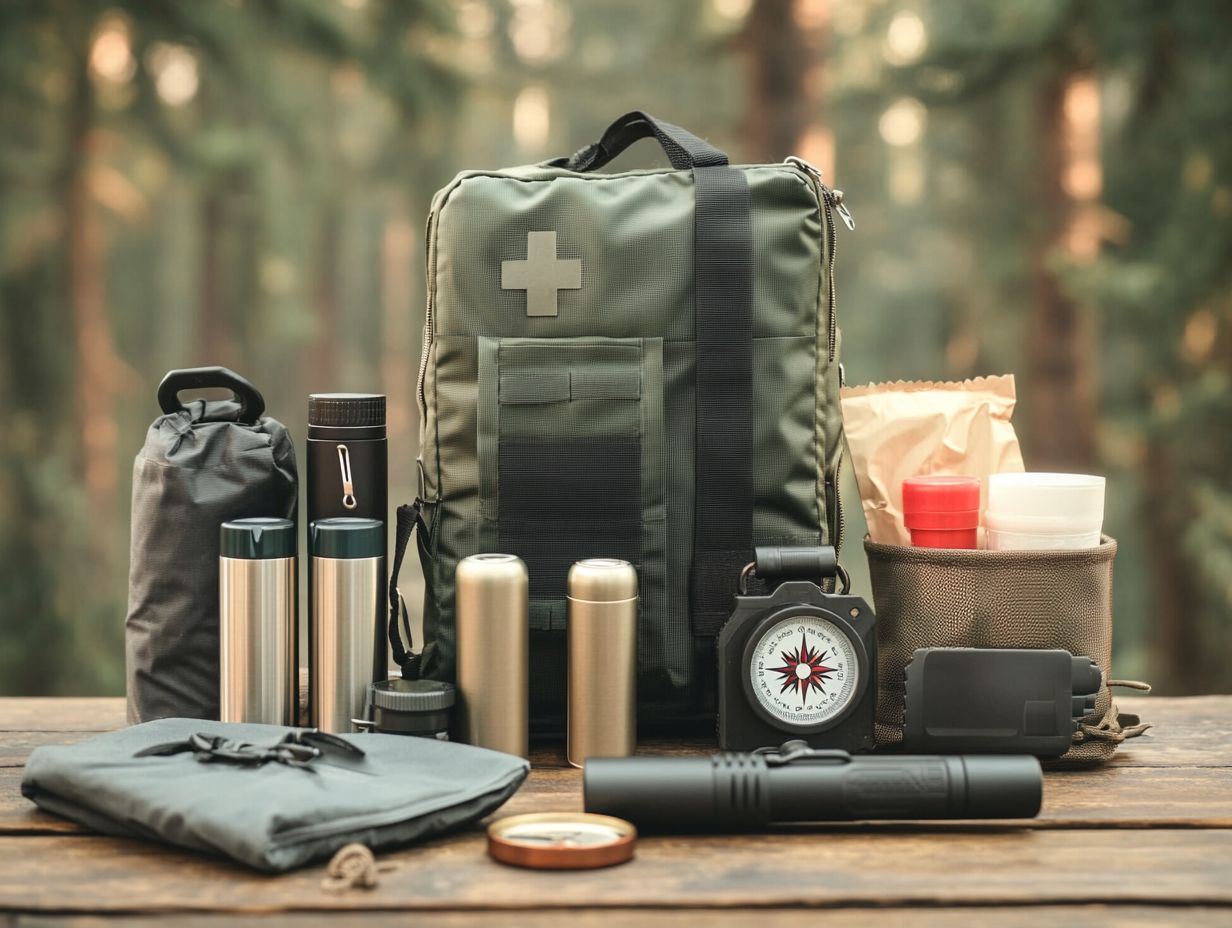
Having emergency cash and important documents in your survival kit is vital for disaster preparedness. These essentials provide access to resources and identification when you need them most. Cash is particularly valuable when electronic payment systems fail; it ensures you can make necessary transactions. Important documents help establish your identity and facilitate recovery efforts.
Make sure to pack different cash denominations; it s essential for any situation. Key documents often include identification cards, insurance papers, and medical records, which are crucial for obtaining aid or accessing healthcare services during a crisis.
Storing digital copies of these documents in a secure cloud service can enhance your preparedness. This way, they re readily available even if physical copies are lost or damaged. In these uncertain times, being equipped with both cash and important paperwork can significantly alleviate stress when every second counts.
Customizing Your Survival Kit
Customizing your survival kit to align with your specific needs is crucial for making it work better for you in emergencies. Each situation can differ significantly, so consider factors such as your household requirements, local hazards, and personal preferences when selecting items for your kit.
This thoughtful approach ensures that your survival kit is meticulously tailored for optimal preparedness.
Factors to Consider for Your Specific Needs
When customizing your survival kit, it s crucial to consider your specific needs based on personal circumstances. Assess the types of natural hazards common in your area and the appropriate outdoor clothing for those conditions. Short-term planning should reflect the unique dynamics of your household, ensuring that supplies meet the needs of each family member.
Take a moment to assess the size of your family. Larger households will likely require a greater quantity of food, water, and medical supplies. Local climate and access to resources can significantly shape your kit’s composition. For example, if you reside in an earthquake-prone region, include tools for search and rescue. To ensure you’re well-prepared, consider what to include in your survival gear kit. Those in flood zones should prioritize waterproof items.
Potential emergencies, such as extended power outages or transportation challenges, should also influence your choices. Gear that provides warmth, light, and communication is essential for enhancing your preparedness, ensuring you re ready for whatever comes your way.
Frequently Asked Questions
What should you include in your survival kit?
Include food, water, shelter, first aid kits, and tools for communication and navigation. These items will help you survive in emergency situations.
Do I need to include different items for different types of emergencies?
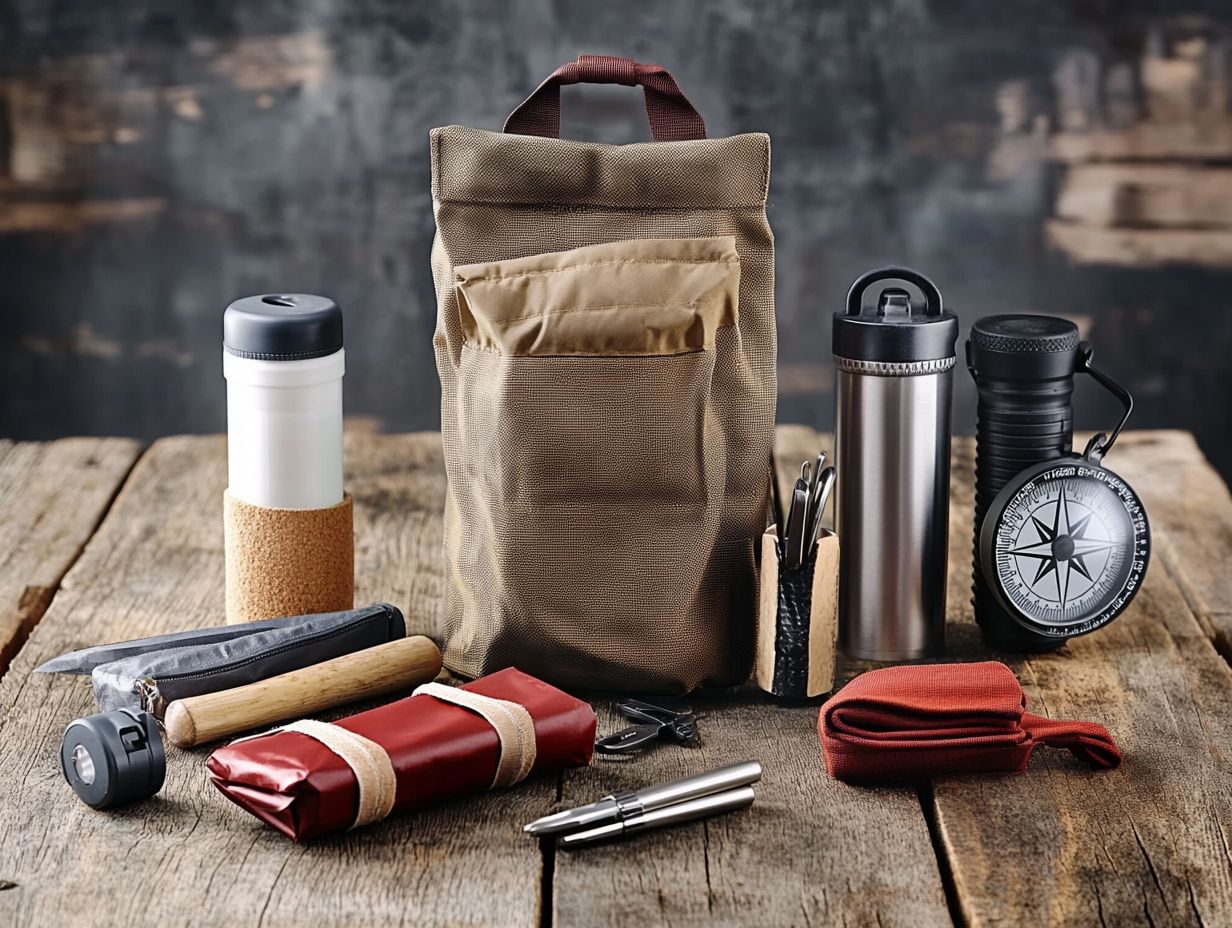
Yes, it is important to tailor your survival kit to the specific type of emergency you may encounter. For example, a natural disaster kit may include items like a flashlight and extra batteries, while a wilderness survival kit may include a map and compass.
Should I pack enough supplies for a specific amount of time?
You must be prepared for at least 72 hours time is critical when emergencies strike. This will give you enough time to wait for rescue or evacuate to a safer location.
What type of food should I include in my survival kit?
Non-perishable, high-calorie food options are best for survival kits. This can include protein bars, canned goods, and dried foods. Make sure to rotate these items out every 6-12 months to ensure they are fresh.
Is it important to have a first aid kit in my survival kit?
Yes, a first aid kit is a crucial component of any survival kit. It should include bandages, antiseptic, medication, and other supplies to treat injuries and illnesses in emergency situations.
Where should I store my survival kit?
Your survival kit should be kept in a cool, dry place that’s easy to reach.
Make sure your family knows where it is so they can access it quickly in an emergency.

